Peyote
(Mescaline)
TrippyWiki score: 8.4/10
TABLE OF CONTENTS
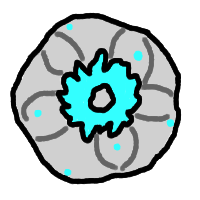
What is peyote?
Peyote is a cactus that contains, along with 60+ other alkaloids, mescaline, a psychoactive compound of the phenethylamine class. The cactus has been used for thousands of years by a variety of Native American tribes for healing and religious purposes.
Why choose peyote over other psychedelics?
Peyote…
Long-term benefits & side effects
Many of the benefits will only occur if you follow the tips below.
Most (if not all) of the side effects are preventable and they will not happen if you follow the Safety checklist.
Peyote…
How to take peyote
Administration
Peyote is taken orally. You can eat the cactus raw but it is unpleasant and extremely nauseating.
Peyote cactus can also be dried, which will make it easier to swallow without vomiting.
Blending peyote and mixing it with ginger and lemon is a much gentler way to consume the cactus.
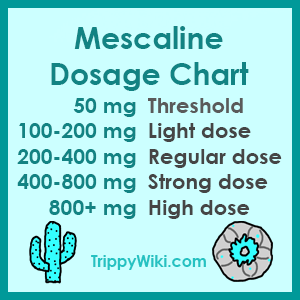
Dosage
The doses below apply to pure mescaline.
Dried peyote’s mescaline content is anywhere from 1-6%. Therefore, 1 gram of dried peyote will contain around 35 mg of mescaline.
If you eat fresh peyote, multiply the amount needed by 5.
Many psychonauts recommend starting with a light dose but this isn’t necessarily the best way to go.
If you start at lower doses, your ego will learn how to control the psychedelic states. Because of that, it’ll be harder to let go once you move to higher doses and this can easily lead to bad trips.
You will also not get as many benefits from the drug as if you were to start with higher doses.
It’s been shown that mystical experiences can deeply change your identity and the higher the dose you take, the more intense they will be.
Do not, however, start with a strong dose if you don’t have a trip sitter nearby.
Keep in mind that the higher the dose you take, the more important it is to be in a safe environment.
Some people are more sensitive than others. There are people who can take a relatively strong dose and feel nothing. This mainly happens to people with autism. Otherwise, it is rare.
Equivalents for 1g of Peyote
The effects of the psychedelics below are not the same as the effects of peyote. This chart only compares the intensity of each substance.
| Dry Peyote | 1 gram |
| Fresh Peyote | 5 grams |
| Mescaline | ~35 mg |
| Dry San Pedro | ~3.5 grams |
| LSD | ~14 µg |
| Magic Mushrooms | ~0.25 grams |
| Moringa Glory (LSA) | ~21 seeds |
Safety checklist
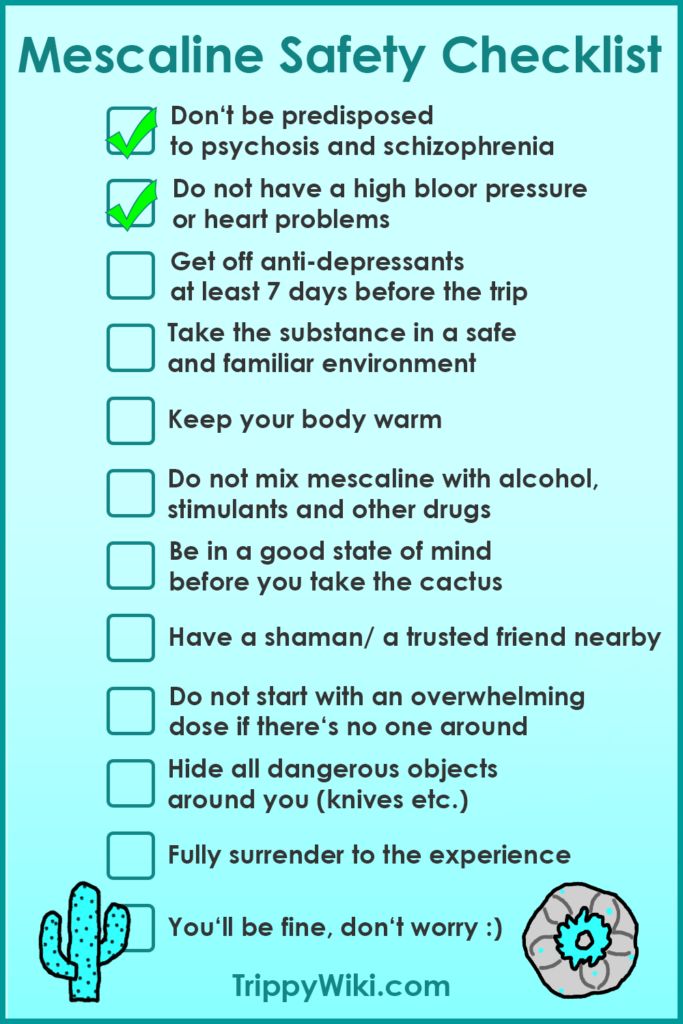
Maximize the benefits
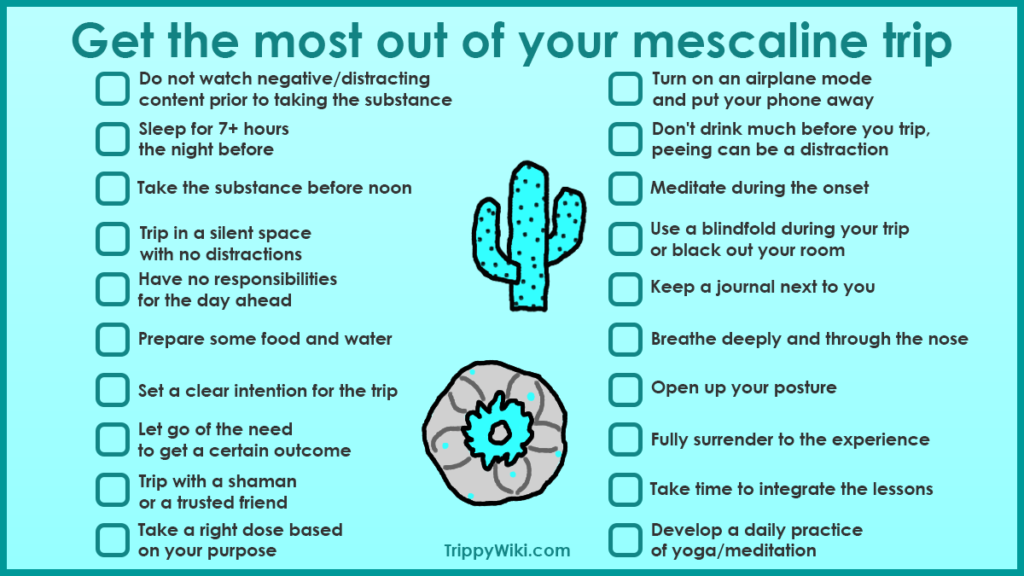
Keep in mind that integration is even more important than the trip itself. Taking psychedelics would be almost useless if you didn’t retain any lessons in your day-to-day life.
What will help you the most is contemplating about the experience – be it by journaling, thinking about the trip, or sharing your memories with a trusted friend.
Distracting thoughts can get in the way, which is why you want to spend the day after your trip without TV, social media, and other distractions.
If you can, spend time in silence and solitude. Meditate, go for a walk, contemplate the experience.
Duration
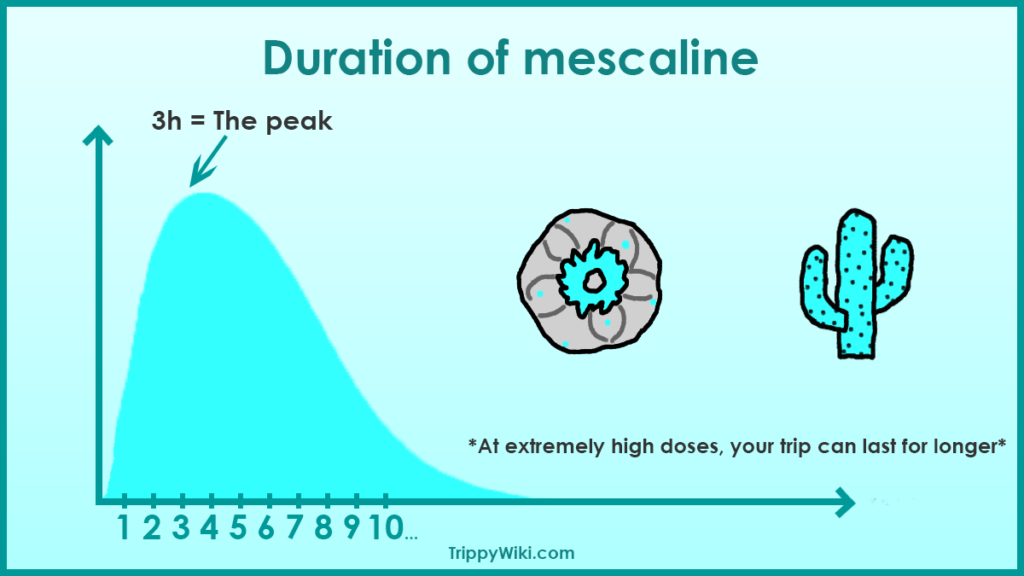
Onset = 30-90 minutes
Come up = 60-120 minutes
Peak = 4-6 hours
Come down = 2-3 hours
What does peyote feel like?
A peyote experience is extremely similar to what you may feel on LSD. The main difference is that users report peyote to be more personal and spiritual.
Peyote is also a lot more nauseating and will likely make you vomit.
Common short-term effects include:
Euphoria
Increased creativity and open-mindedness
Mindfulness, being present
Higher capability for love and compassion
Pain relief
Feeling one with all that is
Seeing life from a different perspective
Appreciating small things
Higher energy
Increased awareness
Stamina enhancement
Feeling your emotions more intensely
Memory suppression
Time distortion
Visual effects (enhanced colors, seeing patterns in everything, distortions, …)
Confusion
Inability to focus
Increased body temperature
Increased heart rate
Worse thermoregulation
Difficulty urinating
Anxiety, paranoia
Vulnerability
The higher dose you take, the more intense these effects will be.
With that said, it is impossible to accurately describe the experience through human language.
The psychedelic affects each individual differently and no two trips are the same. Therefore, there is virtually no way to know what your trip will feel like.
The only way to truly know what peyote feels like is to take it.
The cactus will most likely give you a pleasant experience. Bad trips can happen but you can prevent them by following the tips below.
Bad trips
Bad trips mostly happen because people take the substance irresponsibly. If you take this psychedelic the right way, there is virtually no chance you’ll get a bad trip.
In case you still do, that’s good! A “bad” trip isn’t bad, it can actually be the most healing and insightful moment of your life!
During a “bad” trip, negative emotions are coming up from your subconscious mind. They have always been there whether you are aware of it or not. They have been damaging your life and a difficult trip is an opportunity to process these traumas and unpleasant feelings and let go of them.
The more painful the experience, the more you can heal.
So instead of calling bad trips bad, call them challenging.
If you understand that bad trips are awesome in the long-run, not only will you feel more comfortable diving into these challenging states, it will actually excite you!
Why they happen
The most common reasons for getting a bad trip are:
How to cope with a bad trip
How to end a bad trip
In case you are not ready to face your inner demons yet, there are a few ways to end a bad trip.
One possible way is to put on music that is familiar to you. Another way is to switch up your location and move from one place to another. This can completely change your train of thought.
In case the trip becomes extremely challenging and there is no one around you to keep you safe, consider ending your trip with a trip killer.
Using a trip killer usually is not the best idea because the bad emotions will stay unresolved and you will get little to no benefits from the experience. With that said, using a trip killer is smarter than harming yourself.
The 2 best options that you have for ending a bad trip are Phenibut and benzodiazepines.
Phenibut is generally safer. The downside is that it can take hours to kick in.
So to end a trip, use benzodiazepines but only do this if you completely have to.
Interactions
Microdosing
If you are not ready to take higher doses, microdosing is a way to go because it can bring similar benefits to your life with even fewer side effects.
Since mescaline produces similar effects to LSD, microdosing with peyote should bring similar benefits.
If you are going to microdose with peyote, it is recommended to take 20-40 mg worth of mescaline every 3rd day. Taking a microdose more often is not a good idea because you would become tolerant to the psychedelic and the substance would have little to no effect.
To get 20 mg of mescaline from peyote, take 0.6 grams dried or 3 grams of raw cactus.
40 mg is more likely to bring positive benefits into your life so start at 20 mg and gradually build your way up.
Around 80% of people who take microdoses claim that it has profoundly changed their lives.
For some, microdosing has cured their depression and helped them find beauty in small things. Some also say that they experience significantly less anxiety when they microdose.
Many people take tiny doses to become more creative and productive throughout the day. Microdosing has also been shown to increase athletic performance.
What is awesome about microdosing is that you can stop at any time in case you notice some adverse reaction or if you simply don’t see any benefits.
History of peyote
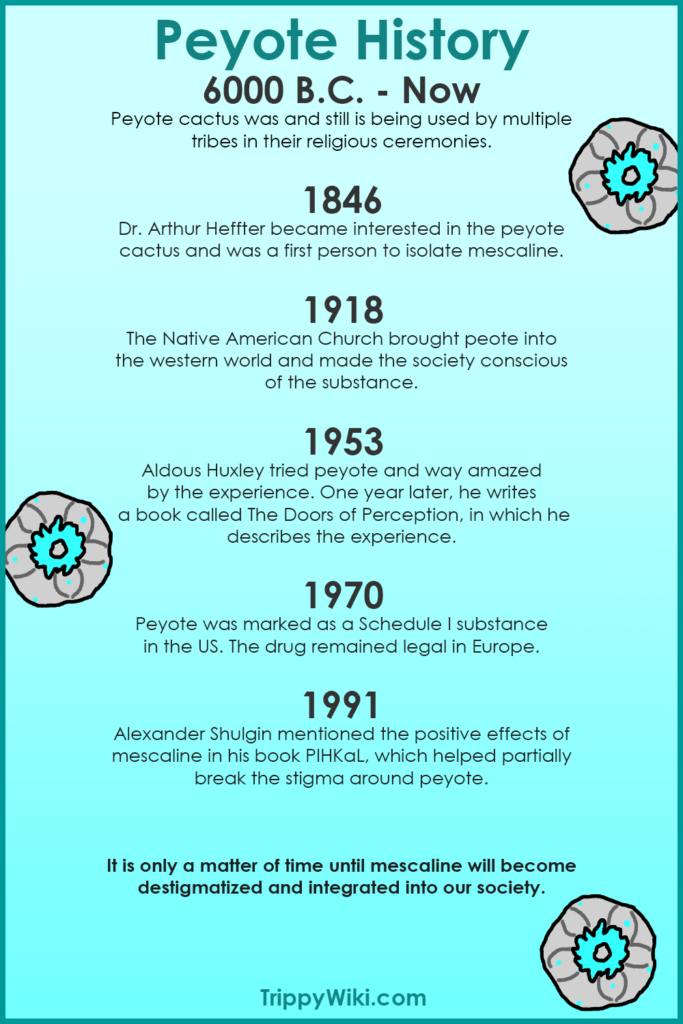
Legality
In the US, peyote is only legal for members of the Native American Church.
One exception is The City of Oakland, where adults over 21 years old can legally grow and take the cactus.
Outside the US, you can generally grow peyote legally for ornamental purposes.
Where to get peyote
These are the ways you can get your hands on the psychedelic:
FAQ
“There are things known and there are things unknown, and in between are the doors of perception.”
– Aldous Huxley
You may also like:
Thank you for taking psychedelics responsibly, immature psychonauts are the last thing the psychedelic movement needs.
And thank you for being a part of this renaissance. Together, we can change the world!
